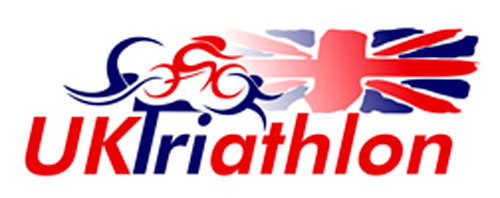Training Tips for all UK Triathlon Events
The information provided on this page is for anyone participating in a triathlon at novice level and wanting to train a lot, or a little, to improve their performance.
The swim is usually breast stroke or front crawl, but back stroke is not allowed for safety reasons as you cannot see where you are going.
For the bike, all you need is a road legal bike (electric bikes are not allowed) and a helmet. It is advisable to get your bike serviced to ensure brakes, gears etc. are all in good working order.
For the run, a pair of running shoes and suitable attire is all that you need. It is also important to remember there is no shame in walking part or all of the course if it means you are able to complete your challenge...
Beginners Guide to Winter Triathlon Training
Whether new to triathlon or a seasoned pro, you are training for 3 disciplines. Different books and theories as well as advice your mate gave you can all conflict making it confusing to know where to start.
So where to start? Well, this winter guide aims to prepare you for next season with some basic principles which are generalised and simplified but form the foundation to any training programme. This will be updated during the year to offer different tips but generally, winter-time is used for technique and endurance with speed being developed early next year.
- KIT – Don’t fork out too much as basic kit is ample for training. It needs to be fit for purpose, safe and should fit you well.
- TECHNIQUE – Even if your technique is not perfect, this can be fine-tuned at a later date. Good technique promotes efficiency causing less fatigue to promote enjoyment. If unsure whether you’re doing something correctly, you can seek advice from a qualified coach or instructor to get it checked out.
- GET TRAINING - You don’t get fit by sitting and reading something – hey - wait - come back – I have not finished yet!!!! Doing something is better than nothing as activity and movement promotes fitness & strength and therefore improvement. This is true even if your technique is not perfect as this can be fine-tuned at a later date.
- STRUCTURE - Don’t throw yourself into a high-volume programme but begin at a level that is suitable for you and that can be progressed. If you are not sure of how to do this, seek help.
- EAT WELL – More exercise means you will need to eat accordingly. Be sensible and don’t dramatically eat less to lose weight or eat more to accommodate the added miles.
- BE SPECIFIC - The following tabs on swimming, cycling, running and strength will give some specific advice for each of these areas.
At Craven Complete, we offer plans and programmes as well as skill sessions covering all these areas.We also offer warm weather training camps where we can cover them in an intense way.
For more information, email coaching@cravencomplete.co.uk or visit our website www.cravencomplete.co.uk
Transition from Winter Base to Specific Race Training
Start your race prep now – transition from winter base to specific race training.
We are now well into the new year and the race season is rapidly approaching; so what do we need to do now to get ourselves fully ready.
This is a transition period from that winter base (miles in the bank/technique) and some quality (upping the speed and intensity). It's gradual though, a steady change by reducing volume but raising the tempo on how hard we are training.
- Swimming – reduce those longer, steady swims and put in some short and faster (100’s / 200’s) so you feel tired at the end of each. Take a reasonable break (20-30 seconds; then do it again – maybe 4 or 5 times in fact.
- Cycling – Interval sessions also work either on the turbo (1/2 mile; or time – 1-2 minutes – again faster and harder, but taking a 30-45s break as easy spinning between each) or on the road (1/2 mile sets with ½ - 1 mile easy between).
- Running – Great time of year to do some faster 400-600m efforts, taking 45-60 seconds recovery.
- Strength training – really important – if you're doing this already – keep going; if not, get started. The following article from 220 Triathlon gives a few tips.
http://bit.ly/StrengthTrainingforCycling
For more information on how to up your training and get race ready, come speak to us – or why not consider one of our training camps. Email us coaching@cravencomplete.co.uk or visit our website www.cravencomplete.co.uk
The Swim (open water or pool based)
Swimming can be the most technical element of triathlon if you really want to smash it and get it right. Swimming teachers and coaches can offer specific advice on technique. For less strong swimmers, this can be money well spent with efficiency here promoting performance. This makes swimming less tiring to give more energy for the remaining 2 disciplines.
KIT
Kit wise all you need this time of year is basically swimwear, goggles, maybe a swim cap (you will have to wear one at the event which we will provide) and if you want, some swim toys (kick board, etc). Don’t go overboard as most pools have some of these.
TECHNIQUE
- Swim slow and steady – Concentrate on technique as this will strengthen you during the latter part of the swim.
- Mix swimming strokes – this will build flexibility.
Use drills to improve style – Using kick, paddles, pull buoys will help develop the finer parts of the stroke so you move through the water with greater ease.
Concentrate with drills – more mental than physical energy for maximum concentration.
ENDURANCE
- Swim slower for longer plus take breaks to keep the effort level optimal.
- Consider drinking just water for slower paced swims; but do include energy replacement for shorter faster (higher tempo) efforts.
Mix sessions – Longer and slower as well as shorter (maybe 2 lengths) efforts at a faster tempo with breaks [400m can be either 400m continuous (slowly) or 8 x 50m swims with 10-15s rest between each].
ADDITIONAL
If you’re not a strong swimmer or newer swimmer, do seek advice from triathlon clubs along with swim fit; or get a coach. This can reap huge rewards in developing the skill of swimming.
Craven Complete offer both swimming teaching and coaching to help swimmers of all levels. This includes non-swimmers wishing to learn, weaker swimmers aiming to go from breast-stroke to front crawl or stronger swimmers aiming to improve technique. Winter time, it is pool based, but as the weather improves next year we will be hitting the open water.
For more information, email coaching@cravencomplete.co.uk or visit our website www.cravencomplete.co.uk
The Bike
You get fit for cycling by cycling; whether on an exercise bike, turbo trainer or road bike (outdoors). Whilst riding outdoors is the gold standard, safety is important and if it’s not safe then using a turbo, spin or exercise bike will suffice.
KIT
Bikes are expensive, but you don’t need to use your life savings to get a full carbon fibre version. A roadworthy bike that works will get you round and can be upgraded if you get the bug. Simple things include:
- Bike fit – a poor fitting bike may not be safe and is uncomfortable
- Safety first – brakes and gears working, tyres pumped up and it won’t fall apart!
- Follow the rules of the road and stay safe.
- Clothing – helmets are vital, with everything else being a bonus.
- Additional tips - cycle clothing should becomfortable and bright; we recommend eye protection (glasses to prevent wind oranything else going in your eyes) and gloves. Cycle shoes and clip in pedalscan come later!
TRAINING
- Winter is distance based and you don’t need to thrash out the pace. It’s considered miles in the bank so get out and ride.
- DO use the turbo or indoor bike if it’s a force 8 gale, it’s dark and you don’t have lights or it’s snowy and icy.
- Vary routes so do go flat as well as hilly.
- DO stop for coffee and cake on long rides – make it sociable
- Include hills but don’t exclusively ride them. Long flat rides are as important as harder undulating ones.
Simply, gentle and slower miles now will promote better endurance later on and help with your general fitness.
Craven Complete offer a range of cycle skill and training sessions.These can be targeted towards the less experienced who need confidence, those wanting to move from flat to clipless and performance-based coaching for someone looking to drop their times.These can be arranged on closed tracks.
For more information, email coaching@cravencomplete.co.uk or visit our website www.cravencomplete.co.uk
The Run
To run better, you need to run whether outside or on a treadmill as there is no substitute for this. Like cycling, outside running is better and more natural, however, safety must come first.
KIT
There is an array of cycling clothing available but, in reality, a reasonable pair of track suit bottoms and suitable top is all that’s required. Saying this, the choice of which running shoe you use is more important. We all have different styles of running, with the wrong shoe having an impact on this. My recommendation is to go to a shop where they have a treadmill and they can run a gait analysis to offer you the best fitting footwear for your style.
TRAINING
- Running has an optimal technique and style which should not be painful or forced. If your new and running is uncomfortable, you may wish to seek advice from a run coach who can help with this.
- Longer and steadier paced runs at an easy tempo are needed in the winter. These will build stamina and ability to complete the distance.
- If you're struggling with running try ‘minute:minute’ running – walk for a minute then run for a minute to help you get fitter. As you do improve, 1 minute of running becomes longer whilst the 1 minute walk becomes shorter.
- Include hills and faster tempo efforts over short periods, but not too long or hard during the winter.
- If you live near a running track, this is a great place to run on a flat surface and being well lit is a safe option in the darker winter months.
Generally, start steady and don’t over-do the running; build distance and/or time gradually.
Craven Complete offers a range of running based services; whether it be run analysis with corrective drills or high-end performance.When integrated into a run programme this can turn your running from a nemesis to a pleasure.
For more information, email coaching@cravencomplete.co.uk or visit our website www.cravencomplete.co.uk
Strength/Flexibility
Most people neglect the strength and core element of training however it is shown to be the key component that keeps everything together. It not only helps performance but strongly prevents injuries.
KIT
Finding a gym is fairly easy, with the kit being serviced regularly. At home some simple pieces of equipment such as a step, dumb-bells or kettle bells can be purchased cheaply and easily. Clothing wise – whatever is comfortable.
TRAINING
- If new, you may wish to seek advice from gym instructors or personal trainers in programme design and technique.
- Start gently and follow a progressive programme to build your fitness.
- Build it into your triathlon specific training so that it is integrated in rather than being a separate component.
- Use organised circuit training sessions to help with general fitness.
Craven Complete can prepare and write strength and conditioning programmes that can be home or gym based to suit all level of athlete.
For more information, email coaching@cravencomplete.co.uk or visit our website www.cravencomplete.co.uk





